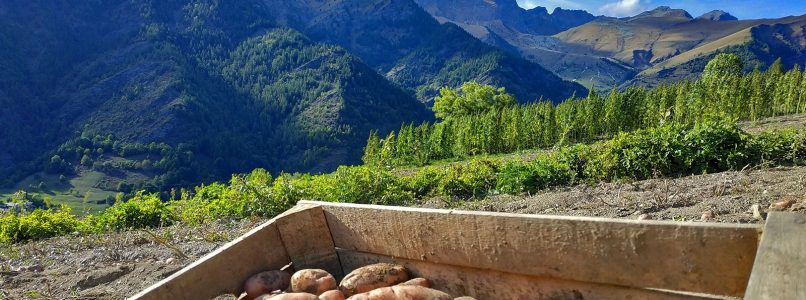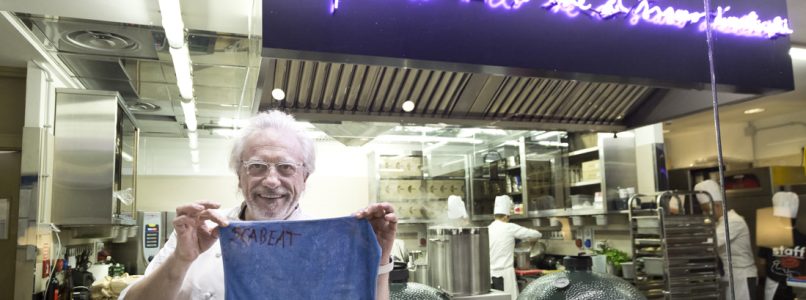The Occitan gastronomic culture is so vast and rich that an article will not be enough to tell it all, but we will try to suggest some indications on how to best enjoy it
A very ancient gastronomic and historical tradition, the Occitan one, which involves four states: France, Monaco, Italy and Spain. We will focus on the traditions and recipes typical of the Piedmontese Occitan gastronomic culture, a tradition that involves the Maira Valley, the Grana Valley, Varaita Valley, Stura Valley, Po Valley, Germanasca Valley, Bronda Valley and Infernotto Valley.
The cuisine of the Maira Valley is a rich, opulent cuisine, a cuisine that reflects the territory where it has developed, a cuisine with a strong mountain vocation. The few deviations in the path were born thanks to the contamination due to the seasonal migration from Italy to France, mostly women who went to France looking for work, to pick olives, flowers or to make housekeepers. These returns home brought back recipes and Provencal flavors, the link with the fish, the trade of anchovies, the union of the latter with garlic, to create one of the best known and appreciated Piedmontese recipes, bagna cauda. It was eaten with cooked and raw vegetables according to the season, although it is a recipe that prefers the cold winter temperatures in order to be enjoyed at its best.
One of the best known products, the protagonist of dozens of recipes, is the potato, in Occitan trifolas, tartiflas or bòdis. Cultivated in Val Varaita and Alta Valle Po, it probably spread thanks to the favorable climatic conditions since the mid-1800s. Prazzo potato (Cn) Al Chersogno farm, used for the preparation of Tundiret (potato dumplings) made with eggs and flour and dipped in boiling water, soft and irregular in shape, seasoned with cream, butter and cheese. Or del Mato (or Mata), an ancient preparation that involves cooking pumpkin (stewed with butter), boiled potatoes, leeks and rice, all the ingredients worked separately and then combined to form layers for cooking in a terracotta pan. To be seasoned with butter and cheese, sometimes with the addition of cream, in some cases also with sausage and vegetables such as San Pietro grass, beets or spinach. The bread was prepared annually, by drawing lots, which usually took place from November to Christmas. Few sweet recipes, but it is worth mentioning the Subric, semolina or potato pancakes or the Apple Panet, prepared for the feast of the Saints: an apple was placed in the center of the bread dough, a real delicacy for the little ones . Sweet bread was usually kept in the attic.
We find the potatoes again, for the preparation of the famous ones ravioles (gnocchi from Val Varaita) seasoned with butter and mountain pasture, Nostrale is often used. Among the typical desserts of the Val Varaita the sweet of Miando (in the Occitan dialect the Baita), a sort of caramel crème, which differs from the traditional recipe by adding pears cooked in white wine.
The protagonists of the recipes of the Valleys are also i legumes, vegetables from the garden, what nature offers, leftovers cooked in earthenware pots, transform apparently simple dishes into sumptuous soups. How theOla al forn, an invigorating soup of legumes, vegetables and meat, cooked in the bread oven once turned off, oven that maintains high temperatures even for two days, thus giving way to prepare other dishes without wasting the accumulated heat.
The soup cooks for at least 12-14 hours, usually at night. Dried borlotti beans, leeks, squash, onions, the poorer pieces of the pig are married in the Ola, butter or olive oil and flavorings are added and salt slightly. Once prepared, it is covered with a lid also made of crock and left to cook in the oven while still hot or on the fire (for at least 7 hours). The secret, for an optimal result, is knowing how to dose the amount of water well. A bit like panissa, the spoon, if placed in the center of the crock pot, must remain standing.
Very important for these valleys is also the Nostrale d'Alpe, the cheese par excellence of the Cuneo mountains, produced exclusively from the mountain pastures. The production huts must be at a minimum height of 1500 meters. Nostrale is a raw milk cheese and each malga differs from another, each milk used is different in aroma, due to the different types of herbs and flowers eaten by cows in the mountain pastures. So it may seem very similar, but it will differ in flavor and percentage of fat. It can be found fresh (Nostrale of about 35 days), or seasoned, from 4 or 5 to 12 months. Seasoning gives it intense aromas and a very particular flavor, a slight spiciness. Since 2011, the Producers Association of Nostrale d’Alpe certifies production with a special brand, as well as specifying in which hut it was produced.
For info and purchases: La Meira Dairy, township Meira 3, Elva, cell. 333 408 6239.
Martini Alessandro Farm in Celle Macra (Cn) in Borgata Grangia 9, tel. 340 3243094 (Mountain butter, Tome, fresh and aged Nostrale).
Alpine Nostrale Cheese Producers Association at the Agenform Dairy Institute p.zza C.A. Grosso 82 in Moretta, tel. 017 293 564.


